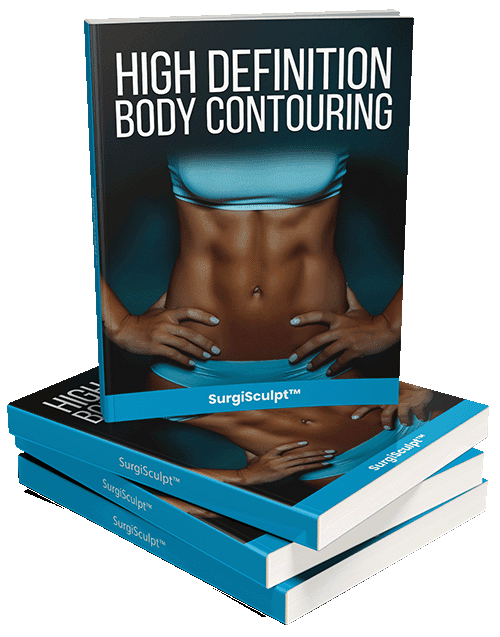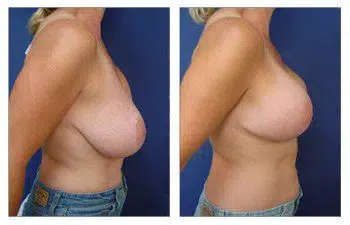
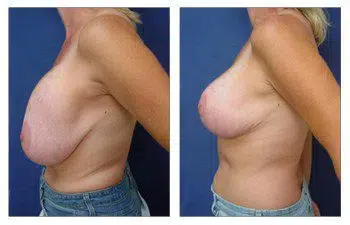
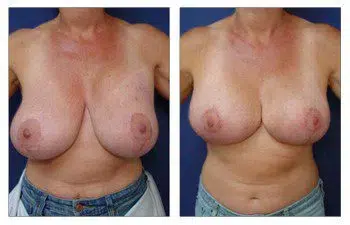
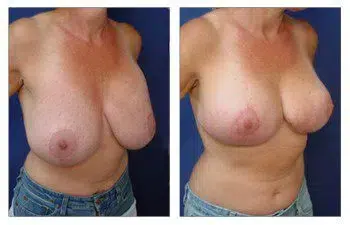
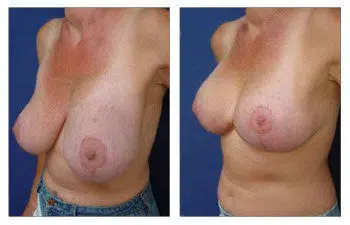
48-year-old patient who previously had a breast lift implant procedure she was unhappy with and the results after having a lift implant revision
A breast lift implant revision may be considered for women who are unhappy following a breast lift with implants. When breast aesthetics are not desirable, a breast lift implant revision may be necessary. A poorly performed breast lift implant outcome is multifactorial and may involve
- Breast mound bottoming out
- Breast mound asymmetry
- Poor upper pole fullness
Breast Mound Bottoming Out
The causes of bottoming out are multifactorial. The first cause of bottoming out includes inappropriate repair of the inframammary crease incision such that the breast mound is not secured to the inframammary crease ligament. This will result in the pulling up of the upper abdominal skin flap, allowing the implant to migrate down. Another cause of bottoming out is insetting the lower breast pole mound longer than desirable.
The lower beast pole will inevitably stretch out with time. If this height is made too long, then it will surely stretch out with time. A final cause of bottoming out is observed in patients with lax tissues. In these patients, the lower breast tissues are prone to becoming lax with time, resulting in increased stretching of lower breast pole tissues.
Breast Mound asymmetry
Breast mound asymmetry may occur for multiple reasons. Asymmetry of the breast mound contour can include the breast mound shape and size. The nipple areal complex may also be asymmetric in size, shape, and position. Breast mound asymmetry might arise if the implants become malpositioned and are more likely if there was asymmetry to begin with.
Poor upper pole fullness
Poor upper pole fullness is a common concern following breast lift with implant surgery. This is because of limitations in how aggressively a breast lift can be performed. The nipple and areola can only be lifted approximately 6 to 8 cm. This constraint is appreciated, and the implant can only be positioned by being centered on the nipple and areola. Since the breast implant determines upper pole fullness, limitations of the nipple position lift may limit the ultimate upper pole fullness.
Breast implant revision options
The best way to correct breast lift with implant revision is to diagnose what is causing the suboptimal result. As such, breast lift implant revision may consider several maneuvers that include:
1. Inframammary crease reinforcement
2. Wedge excision of the lower breast pole
3. Revision lift to raise the nipple to a more optimal position
4. Change of implant size or style
Breast lift implant revision Summary
In conclusion, breast lift implant revision surgery requires a comprehensive analysis. Comprehensive analysis is critical to being able to construct an effective and customized surgical plan.
Please see the transformation of this 48-year-old patient who previously had a breast lift implant procedure she was unhappy with and the results after having a breast lift implant revision.
